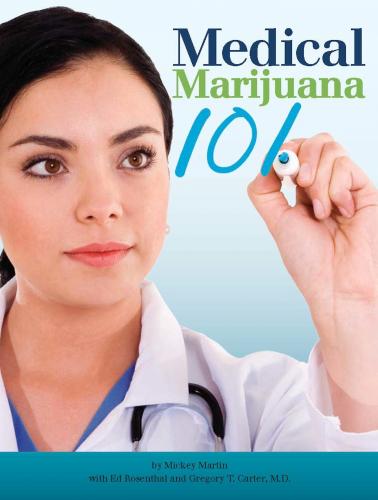Still, a large body of peer-reviewed controlled studies indicate the great potential for medicinal marijuana. Only when the stranglehold on marijuana research is ended will researchers be free to explore all its potential medical benefits.
How do I know if marijuana is a good medicine for me?
Maybe you’ve tried marijuana in the past but never really considered its medicinal qualities. Or maybe you’ve never tried marijuana. The first issue to consider is medical need. Do you have a condition that use of marijuana might benefit? Chapter 3 considers specific conditions for which marijuana can be helpful.
It is your decision to make, and ultimately it is your health at stake.
Always discuss whether marijuana is a good choice with a trusted medical professional. Be aware of local laws and learn about the drug testing regimen used by employers. Because marijuana is reemerging into society as a legitimate medicine, it is less taboo than it once was, but there are still social and cultural factors that may affect your decision. Friends’ and family’s concerns and misunderstandings can be overcome with basic education, but you still may experience skepticism from people who have spent their lifetimes hearing that marijuana is a “dangerous,” “illicit” drug only used by felons and reprobates. It is your decision to make, and ultimately it is your health at stake.
Your decision may be influenced by the knowledge that many people find great relief from this natural and powerful plant. Don’t decide hastily or under pressure. If marijuana makes you feel better chances are it is a good choice for you. If it is does not contribute to your well being, however, or if you experience adverse effects when using it, it is obviously not a good option for you. If using marijuana will cause you to lose your job or alienate your loved ones, it’s obviously not a good alternative for you. Only you can answer these questions and make the best decision for your situation.
The Medical Effects of Marijuana and the Science Behind It
Why does marijuana make you feel better? Marijuana contains hundreds of natural chemical compounds, many of which possess psychoactive and therapeutic properties that work within your body to produce positive effects that support healing. Whether you inhale or ingest marijuana, its active ingredients make their way to your blood stream and interact with your body to produce beneficial effects. The chemical compounds that make marijuana an effective medication are called cannabinoids.
What is a cannabinoid?
You’ve heard the term THC in reference to marijuana. THC is short for delta-9-tetrahydrocannabinol, the most prominent psychoactive cannabinoid found in marijuana. Cannabinoids are pharmacologically active compounds. THC is one of them. When you use marijuana, the cannabinoids find their way to their target, your body’s cannabinoid receptors. The cannabinoids bind to one of the receptors. This might make you feel euphoric and relieves the symptoms of your medical condition.
THE CANNABINOIDS
The major active chemical compounds found in marijuana are:
How does your body process marijuana?
The effects of marijuana are produced by a cannabinoid receptor system in your body consisting of at least two receptor types: CB1 and CB2. CB1 receptors are found exclusively in the brain. They are concentrated in the hippocampus and cerebral cortex (see illustration on p. 16), which control memory and cognition. CB1 receptors interact with marijuana’s active compounds to produce its psychoactive effects including the euphoric, blissful state that often makes pain more manageable.
CB2 receptors are termed “peripheral receptors” because they are found outside the brain, primarily in the immune system and organs, especially the spleen and in white blood cells. They may be responsible for the cannabinoids’ other effects, including the reduction of inflammation. Some studies indicate beneficial effects from marijuana on neurodegenerative disorders such as Alzheimer’s, Parkinson’s, and Huntington’s diseases.
The cannabinoid receptor system is where marijuana becomes medicine.
The cannabinoid receptor system is where
